Ackee is a popular, Jamaican fruit, and when prepared with a mixture of peppers and salted fish, it creates a breakfast or brunch that is savory, unique and totally delicious!
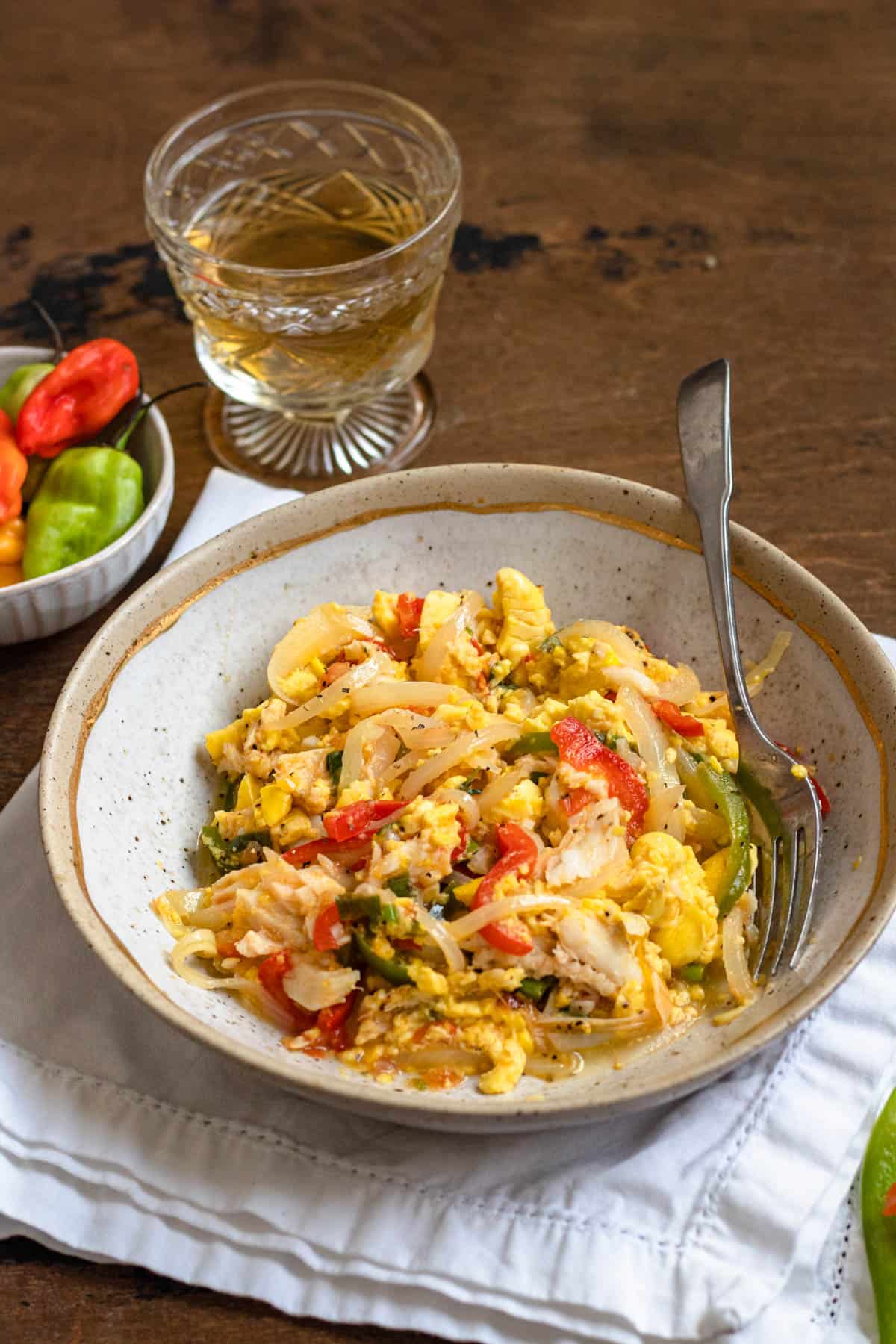
Hello Reader! I try my hardest to research recipes as best as I can before posting to ensure I am representing each culture correctly. If this recipe is from your country and I have made a mistake or you have suggestions for how to make it more authentic, I would love to hear! Please leave a comment below letting me know what should be different, and I will rework the recipe. It is always my intention to pay homage and respect to each cultural dish that I cook. Thanks for reading!
If just the title of this dish has you feeling intimidated–don’t go running for the hills just yet!
Ackee and saltfish is the national dish of Jamaica, and while the ingredients are foreign in the US, the popularity of the dish is for good reason. It’s the perfect combination of salty, sweet and spicy with a soft, melt-in-your-mouth texture.
Ackee is the national fruit of Jamaica. It grows on trees and looks something like a wrinkled bell pepper until it becomes ripe and the thick skin splits open. The flesh inside contains a single black seed.
For this recipe, you don’t have to worry about picking out the perfect, ripe Jamaican ackee at a specialty store. You can’t find fresh ackee in the United States. Instead, you can use ackee that is canned or frozen and ready to eat.
The rest of the ingredients come together quickly for a meal that is surprising, savory and filling. It can be enjoyed for breakfast, brunch or dinner with a variety of delicious sides.
If you’re looking for something new to try, this recipe is a great one! It’s easy, filling and flavorful and a perfect representation of authentic Jamaican cuisine.
Why Make this Recipe
- Quick: This recipe can come together quickly in just a few easy steps, making it perfect for a fast meal.
- Unique: If you have never tried ackee before, you are in for a treat. This Jamaican fruit may surprise you with its mild sweetness.
- Taste of Jamaica: This Ackee and Saltfish Recipe is the national dish of Jamaica and a great way to experience the islands from home!
Recipe Origin
Perhaps surprisingly, the main ingredients of Jamaica’s national dish is not native to Jamaica. Ackee is actually native to West Africa and was brought to Jamaica by African slaves when they were brought by English settlers to help with the growing sugar cane and rum business.
Ackee is actually poisonous if not prepared correctly. It cannot be harvested until it ripens and the skin of the fruit opens to reveal three or four pegs of flesh, each with a black seed. The fruit is removed from the skin, cleaned and then boiled in salt water.
Saltfish is also connected to slavery on the islands. Jamaica was a very popular stop on the trade route from Europe to the Americas. Sailors would preserve cod in salt for the long journey. Cheap salt cod was shared on the island and became a staple for keeping enslaved people nourished.
The two central ingredients, delicious ackee and saltfish, are then combined with sweet pepper, onions, tomatoes and, of course, a little bit of Scotch bonnet peppers, for a saltfish dish that has become an island favorite.
The soft texture of the ackee fruit pairs perfectly with the salty fish, and the peppers add flavor and a hint of spice to the dish. It’s a popular dish for breakfast but can be enjoyed any time of day.
What Do I Need To Make This Recipe?
Ingredients
Here is a visual overview of the ingredients in the recipe. Scroll down to the recipe at the bottom for quantities.
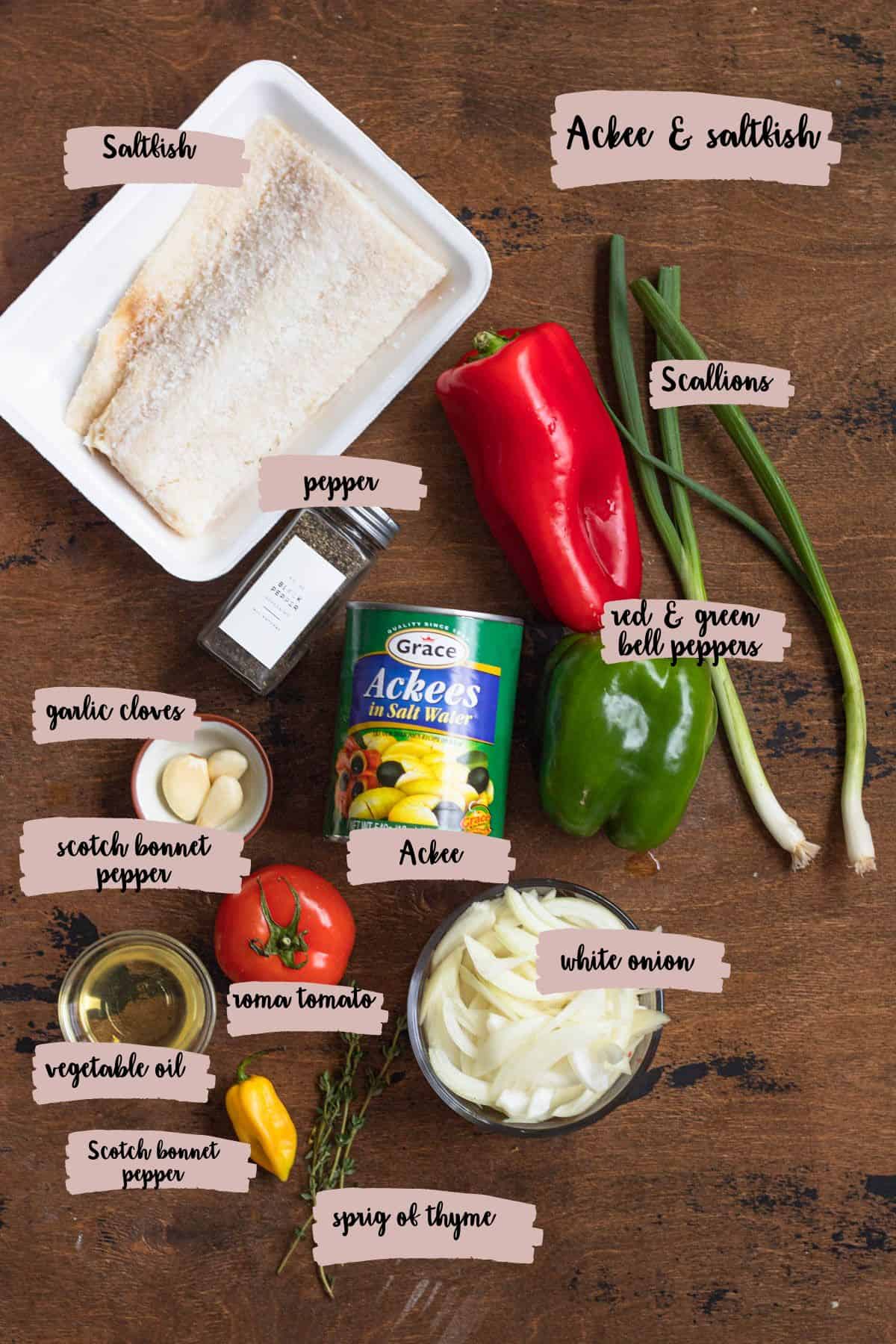
- Salt Fish: Look for boneless & skinless saltfish if possible. Traditionally salted cod is used for this recipe, but any white fish will work.
- Onion: Medium sized white onion
- Bell Peppers: Red and green
- Thyme: Fresh thyme is preferred but you could also use dried
- Scotch Bonnet Pepper: You can substitute a habanero pepper in a pinch. Add more Scotch bonnet peppers for more spice but be careful–this is a very hot pepper. You can remove the seeds if you want it to be less spicy
- Canned Ackee: Drained and rinsed. Be very careful when dumping and rinsing your ackee. It is very fragile and will fall apart easily.
How to Make This Recipe
Step 1: Prepare the fish
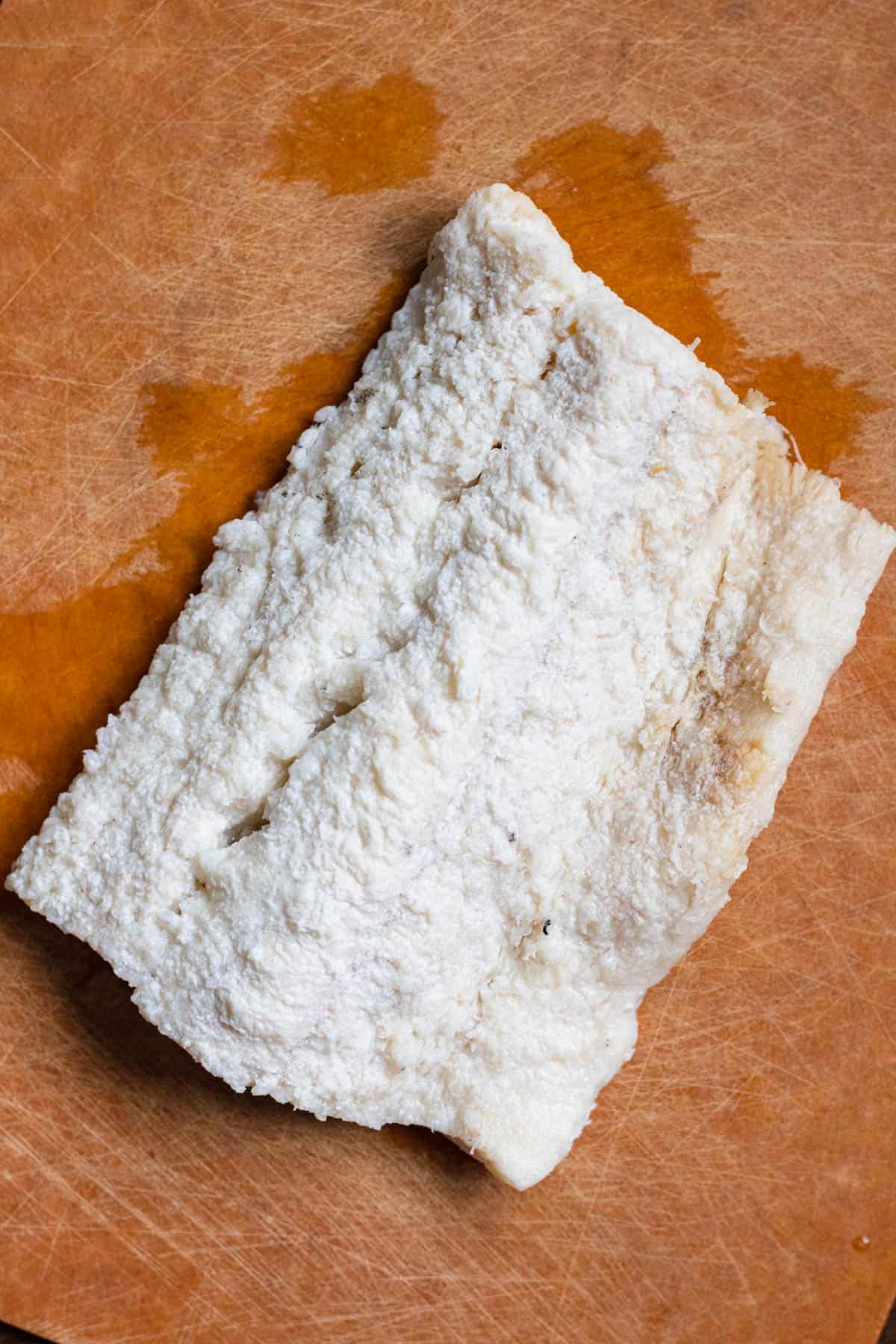
Run your saltfish under water for 20-30 seconds to remove the top layer of salt.
Boil a large pot of water. Add the salt fish and cook for about 15 minutes. When the salt fish is soft to the touch, remove it from the water. Place it in a bowl of cold water to cool. Remove the bone, skin, and scales from the fish if necessary.
When cooled, cut the salt fish into small pieces. Set aside.
Step 2: Cook your vegetables
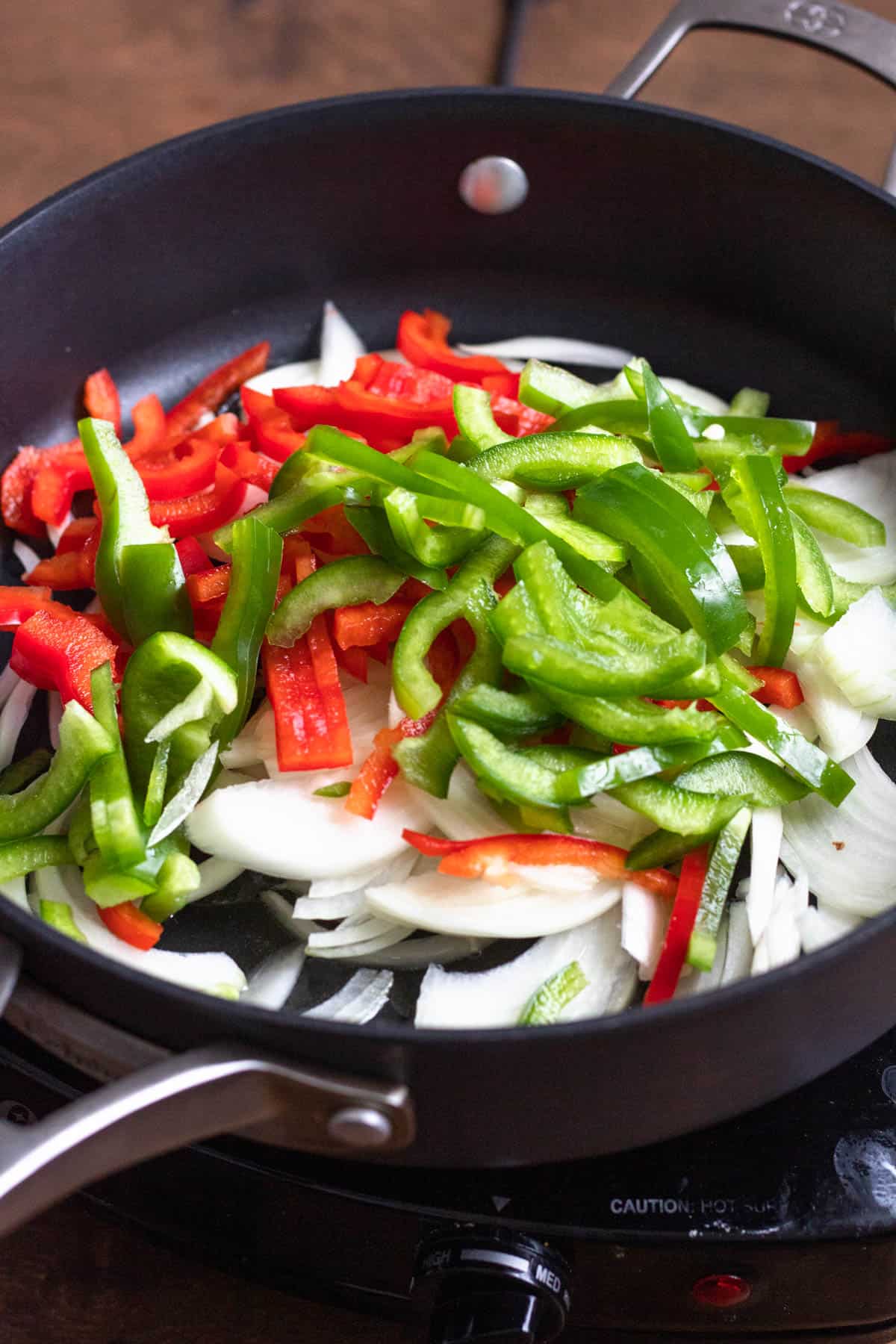
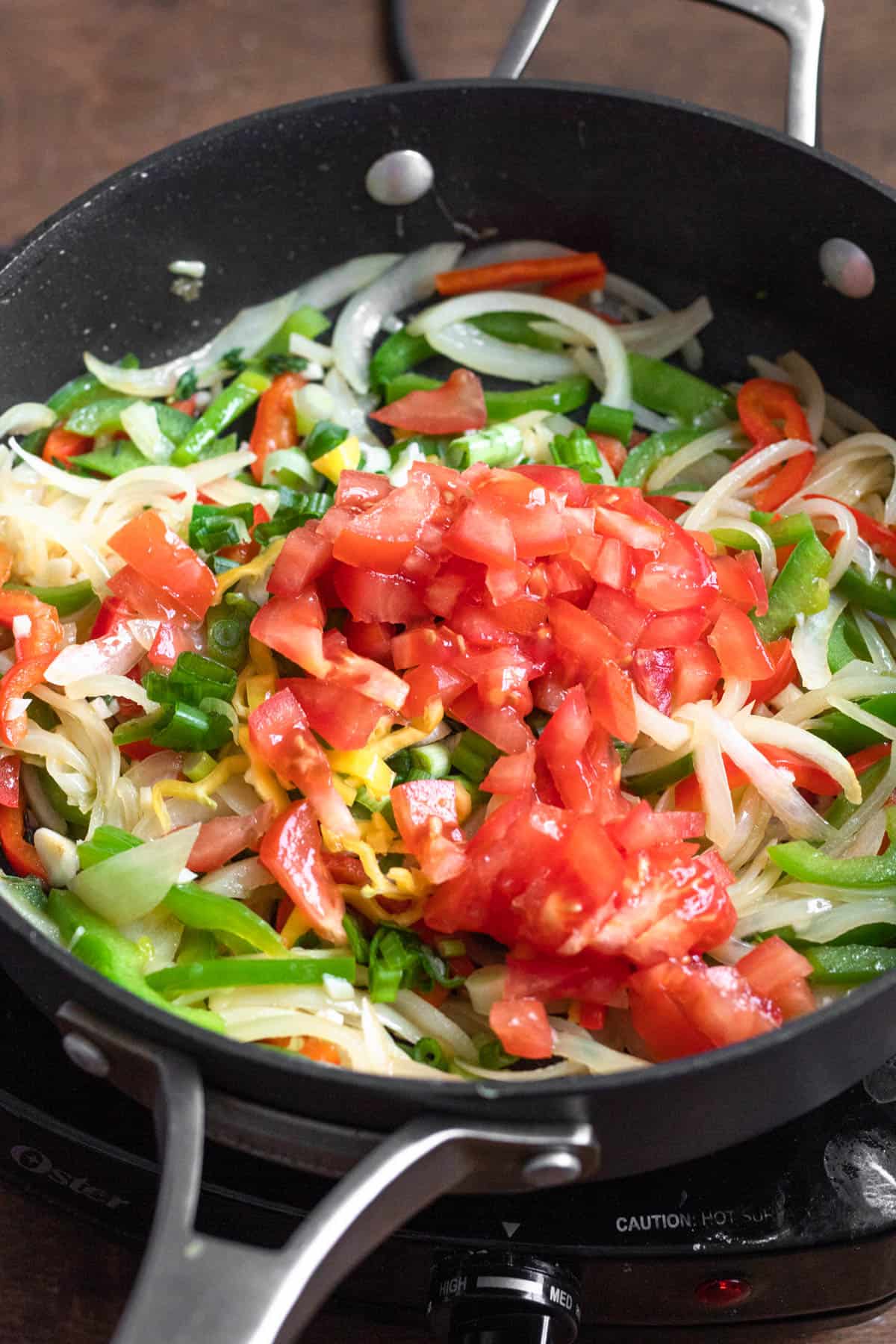
Add the vegetable oil into a large skillet over medium-high heat.
Allow the oil to heat up for a couple minutes. Once warmed, add the white onion, red bell pepper, and green bell pepper and saute for 5-7 minutes until the onions start to soften.
Then add the garlic and thyme and saute again for 30 seconds.
Next add the scallions, scotch bonnet pepper, and tomatoes. Saute for 3-4 minutes.
Step 3: Combine your ingredients
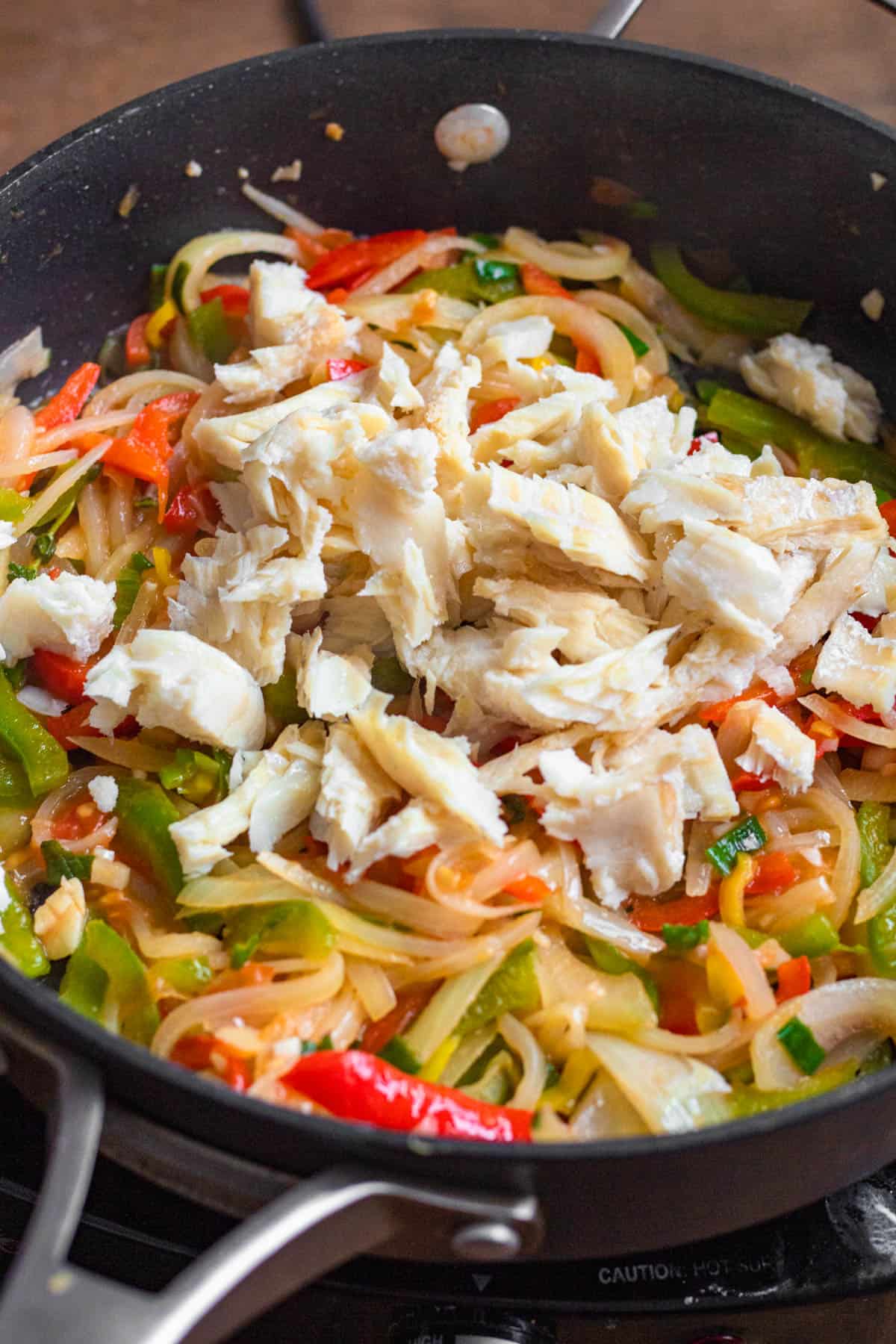

Next add the cooked salt fish. Saute again until the vegetables are soft and cooked through.
Add the drained and rinsed ackee into the pan and stir gently to combine.
Sprinkle with black pepper, continuing to cook over low heat for 1-2 more minutes, stirring gently.
Serve and enjoy!
Notes: Researched Using Morris Time Cooking, @Jadisbeauty._ on TikTok, @thegrubsworkskitchen on TikTok, and David & Jody. Recipe reviewed by Deepeeter at @Cultureful_Catering on Instagram
Expert Tips

- Ackee has a very delicate texture so make sure to be gentle when stirring or you will end up with mush. You also need to be careful not to overcook the ackee. Add it in just for the last few minutes.
- Salfish boiled the right way should be about as salty as bacon. If your salt fish is too salty after 15 minutes of boiling, remove the fish from the pot and rinse it with warm water to get rid of some of the excess salt. Then refresh the water in your pot and continue to boil until the salt has reached the desired amount and the saltfish is easily broken apart.
- Some recipes call for added bacon to add some extra flavor.
FAQs

Ackee and Saltfish is most commonly eaten for breakfast, but it can also be enjoyed for lunch or dinner. Serve it with fried dumplings or your favorite rice dish.
This Ackee and Saltfish Recipe is best served fresh, but you can save leftovers in an airtight container in the refrigerator for 1-3 days. Reheat it in a skillet over medium heat on your stovetop when you are ready to eat.
You could also chop your veggies and prepare your saltfish ahead of time to make cooking the dish quick and easy if you want to try to make it ahead. This recipe does not freeze well because it will change the texture of your ackee and your bell peppers.
Ackee is one of those things you just have to try to understand. It is soft and smooth with a mild flavor. It’s not as fruity as your typical tropical fruit. Some people compare the texture of canned ackee to that of scrambled eggs.
Fresh ackee has the potential to be poisonous, but the venom wears off as the fruit ripens. In 1973 imports of fresh ackee were banned in the United States but the fruit that is canned or frozen is perfectly safe and can be found for sale at most international grocery stores.
Did you like this Ackee and Saltfish Recipe? If so, make sure to check out these other recipes I picked out just for you:
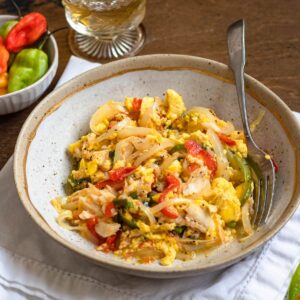
Ackee and Saltfish
Equipment
- Mixing Bowl(s)
- Pot(s)
- Pan(s)
Ingredients
- 12 oz Salt Fish, boneless & skinless if possible
- 2 tbsp vegetable oil
- 1 Small White Onion, sliced
- ½ Red Bell Pepper, sliced
- ½ Green Bell Pepper, sliced
- 3 Cloves Garlic, minced
- 4 Sprigs Thyme
- 2 Scallions, chopped
- 1 Scotch Bonnet Pepper, sliced (seeds removed if you want it less spicy)
- 1 Roma Tomato, chopped
- 1 15 oz Ackee, drained and rinsed
- ¼ – ½ tsp black pepper (Use code FF20 for 20% off)
Instructions
- Run your 12 oz saltfish under water for 20-30 seconds to remove the top layer of salt.
- Boil a large pot of water. Add the salt fish and cook for about 15 minutes. When the salt fish is soft to the touch, remove it from the water. Place it in a bowl of cold water to cool. Remove the bone, skin, and scales from the fish if necessary.
- When cooled, cut the salt fish into bite-sized pieces. Set aside.
- Add 2 tbsp vegetable oil into a large pan over medium-high heat.
- Allow the oil to heat up for 1-2 minutes. Once warmed, add the small sliced white onion, ½ red bell pepper, and ½ green bell pepper and saute for 5-7 minutes until the onions start to soften.
- Then add the 3 cloves garlic and 3 sprigs thyme and saute again for 30 seconds.
- Next add 2 scallions, 1 scotch bonnet pepper, and chopped tomato. Saute for 3-4 minutes.
- Next add the cooked salt fish. Saute again until the vegetables are soft and cooked through.
- Add the drained and rinsed ackee into the pan and stir gently to combine.
- Sprinkle with ¼ tsp black pepper, continuing to cook over low heat for 1-2 more minutes, stirring gently.
- Serve and enjoy!
Video
Notes
- Salt Fish: Look for boneless & skinless saltfish if possible. Traditionally salted cod is used for this recipe, but any white fish will work.
- Onion: Medium sized white onion
- Bell Peppers: Red and green
- Thyme: Fresh thyme is preferred but you could also use dried
- Scotch Bonnet Pepper: You can substitute a habanero pepper in a pinch. Add more Scotch bonnet peppers for more spice but be careful–this is a very hot pepper. You can remove the seeds if you want it to be less spicy
- Canned Ackee: Drained and rinsed. Be very careful when dumping and rinsing your ackee. It is very fragile and will fall apart easily.
- Ackee has a very delicate texture so make sure to be gentle when stirring or you will end up with mush. You also need to be careful not to overcook the ackee. Add it in just for the last few minutes.
- Salfish boiled the right way should be about as salty as bacon. If your salt fish is too salty after 15 minutes of boiling, remove the fish from the pot and rinse it with warm water to get rid of some of the excess salt. Then refresh the water in your pot and continue to boil until the salt has reached the desired amount and the saltfish is easily broken apart.
- Some recipes call for added bacon to add some extra flavor.


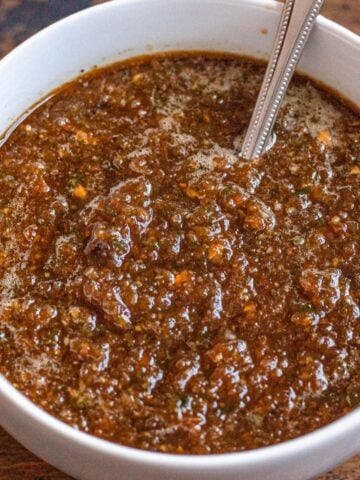
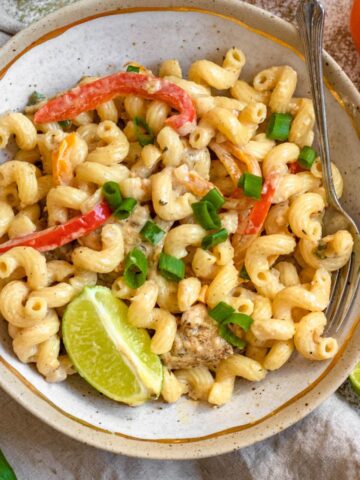
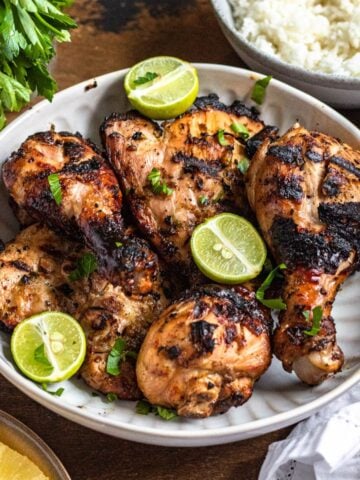
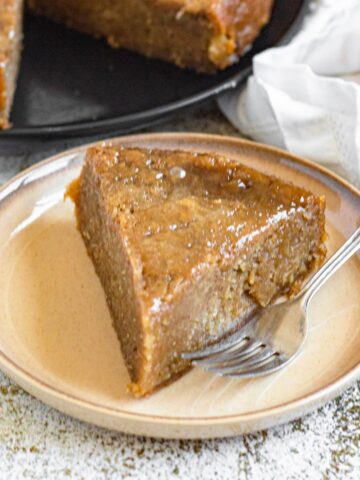
Janice Bird says
I love this dish. Ackee is slightly firmer than avocado which is another tropical fruit growing in Jamaica. I make this dish with sautéed cabbage so I feel healthier due toore low carb vegetable content.
The Foreign Fork says
I’m so glad you liked it Janice! The sauteed cabbage sounds like a great idea 🙂